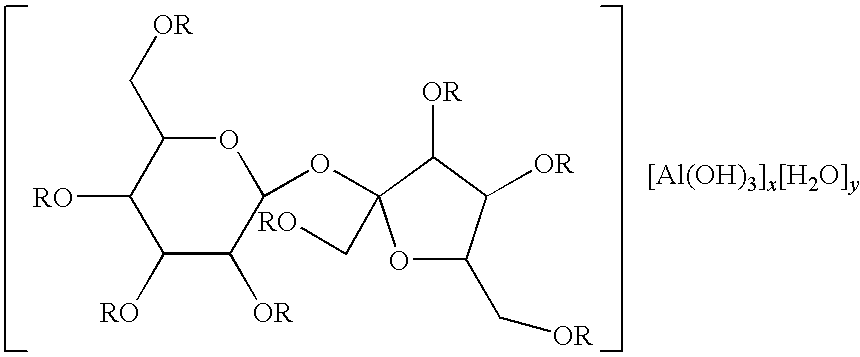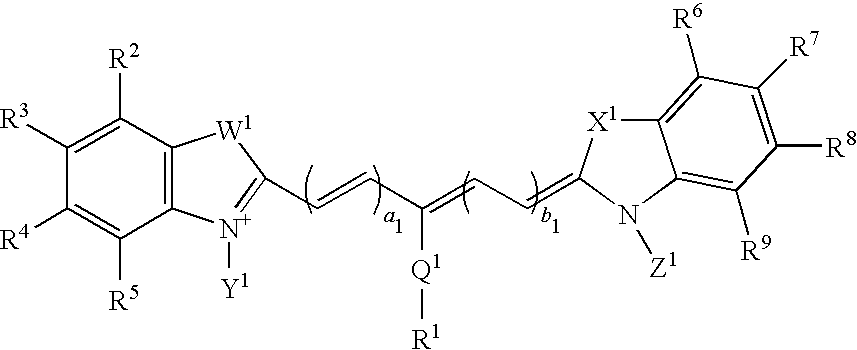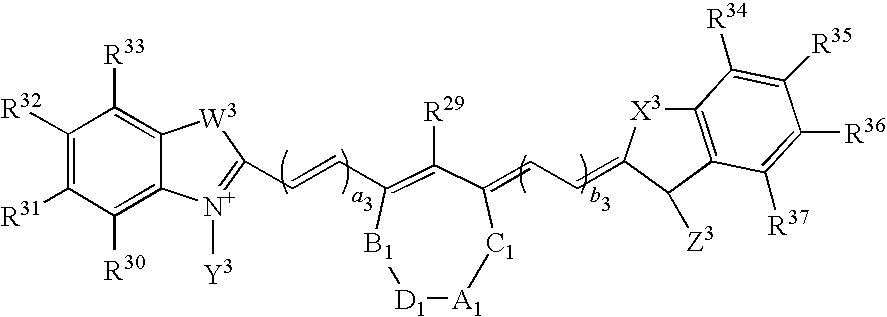Optical Imaging Contrast Agents
a contrast agent and optical imaging technology, applied in the field of optical imaging contrast agents, can solve the problems of not always identifying, patient discomfort, and gastrointestinal problems to worsen
- Summary
- Abstract
- Description
- Claims
- Application Information
AI Technical Summary
Benefits of technology
Problems solved by technology
Method used
Image
Examples
Embodiment Construction
[0011]In accordance with the present invention, it has been discovered that certain saccharide molecules that are known to selectively bind to ulcerated and / or inflamed sites of the gastrointestinal tract upon introduction therein may be substituted with at least one optical molecule to produce an optical imaging agent that can be used to specifically target and image inflamed or ulcerated sites of the gastrointestinal tract. As used herein, “optical molecule(s)” means optical dyes, nanoparticles, and optical dye encapsulated in a physiologically acceptable particulate material that are suitable for optical detection in the gastrointestinal tract. Although discussed primarily herein as a suitable optical dye chemically introduced into the sulfated and / or phosphated saccharides, it should be understood that suitable nanoparticles (including quantum dots), or optical dyes encapsulated in a physiologically acceptable particulate material, which are physically introduced into the sulfat...
PUM
 Login to View More
Login to View More Abstract
Description
Claims
Application Information
 Login to View More
Login to View More - R&D
- Intellectual Property
- Life Sciences
- Materials
- Tech Scout
- Unparalleled Data Quality
- Higher Quality Content
- 60% Fewer Hallucinations
Browse by: Latest US Patents, China's latest patents, Technical Efficacy Thesaurus, Application Domain, Technology Topic, Popular Technical Reports.
© 2025 PatSnap. All rights reserved.Legal|Privacy policy|Modern Slavery Act Transparency Statement|Sitemap|About US| Contact US: help@patsnap.com



